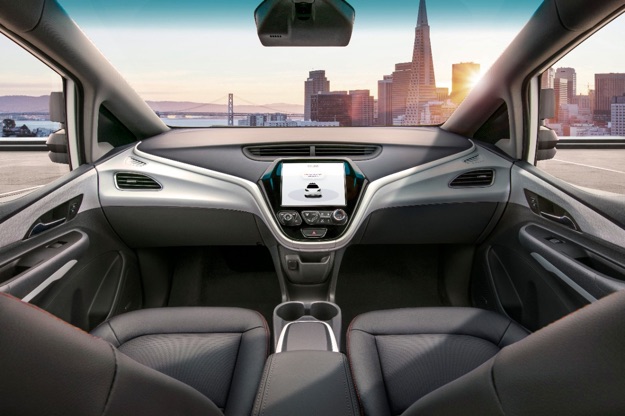GM Cruise AV Autonomous Electric Car Shuns Human Drivers, Steering Wheel And Pedals

General Motors' new Cruise AV throws tradition out the window by removing the steering wheel and the foot-operated pedals. In essence, you are simply along for the ride -- at all times. It seems a little unsettling at first to not see a big steering wheel dominating the left-hand side of the cabin, but if technology keeps advancing at the rate its going, it could be commonplace in the next decade or two.
The Cruise AV is based on the Chevrolet Bolt electric vehicle, which was launched in 2017 and has a driving range in excess of 200 miles. Passengers inside the vehicle will interact with the Cruise AV primarily through the large, central touch screen or via voice controls. It is there where they'll be able to enter a destination, after which the Cruise AV will [hopefully] complete the route with little drama.
GM doesn't appear to be targeting the Cruise AV at typical car buyers; instead, the self-driving car will be used in ride-sharing fleets. You will be able to book a ride using a smartphone app, and the closest [unbooked] vehicle will then travel to your current location. In an interesting twist, GM's supporting documentation on its self-driving vehicle efforts [PDF] detail that your personalized radio station settings and climate controls will be synced when you book a ride.
So, when your Cruise AV arrives, you'll be glad to know that your preferred disco channel will be blaring the Bee Gees while the cabin is set to a toasty 74 degrees.

"Imagine the peace of mind knowing that whatever our age, our stage of life or our physical capabilities we have the freedom to go wherever we want to go," writes GM. "Our self-driving vehicles will improve access to mobility for those who currently cannot drive due to age, disability, or otherwise."
As good as this all sounds for those that may see driving as a chore -- especially if you spend much of your commute sitting in traffic -- GM still has federal hurdles to jump over (like requiring that humans be able to gain control of a vehicle in operation) to get a vehicle like the Cruise AV approved, and must also deal with state regulations.

